It had been a one-way affair. In the successful transatlantic tests of December 1921, North America transmitted and Europe listened, along with a lone transplanted North American. Now it was time to try it in both directions, though still not in complete QSOs.
In October 1922 the ARRL announced that another round of transatlantic tests would be run in December, with preliminary trials from 25 October through 3 November.1 This time the test would include British, French and Dutch amateurs. For the first ten days of the test, American and Canadian amateurs would transmit and European amateurs would receive, then they’d switch roles for another ten days. In North America, transmitting stations would be allocated specific time slots after participating in a qualifying run during the trials. Unlike the previous year’s tests, anyone could try out for these transmit slots. During the qualification trials, stations in each of the ten districts, nine US plus Canada, would transmit during each of ten 15-minute periods between 9:30 and 12:00 CST. The district order would rotate in sequence on subsequent nights. While each district was transmitting, all the others would be listening. Participants were to simply send their call sign during their assigned period. Stations that were copied at least 1,200 miles away would then qualify for assigned transmitting slots during the test, and would be given code words to send which would be kept secret and used to verify reception.
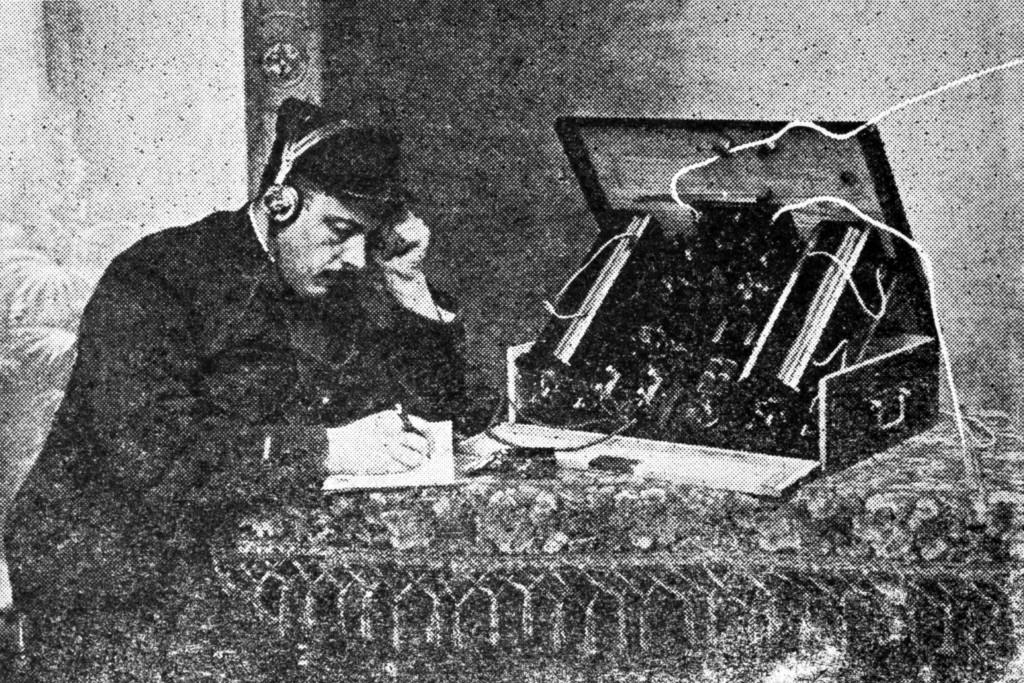
Pierre Corret during the war
European transmitting wavelengths would be broadcast by the ARRL Operating Department before the tests began. In the UK, the Wireless Society of London was organizing the effort, with Phillip Coursey again serving as a member of the organizing committee.2 Two special stations near London planned to transmit during the European period, including 2FZ at Baguley using a 1-kW tube transmitter.
In France the three national amateur radio organizations formed a joint committee just for the tests. It was led by Dr. Pierre Corret as president, and included Léon Deloy, perhaps the most well-known French amateur. Deloy owned and operated station 8AB, which would be the main transmitting station in France for the test, using a 1-kW tube transmitter powered by 25-Hz unrectified AC supply.
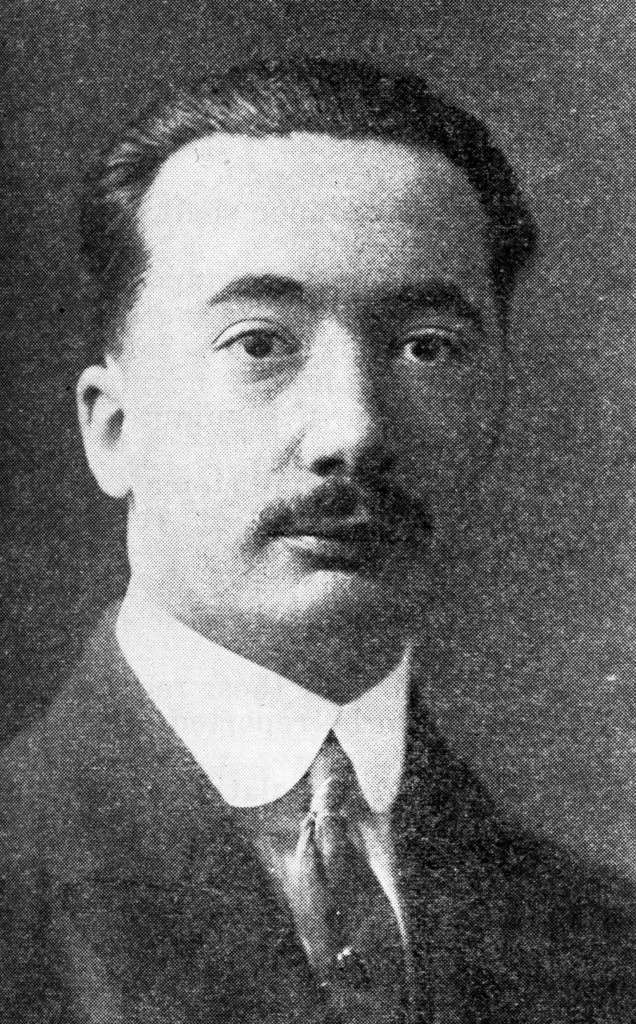
Leon Deloy, 8AB
Born in February 1894, Deloy was introduced at an early age to electricity and radio by his godfather, an accomplished scientist and astronomer (Camille Flammarion).3 After getting a receiver of his own in 1910, he copied nightly news broadcasts from the Eiffel Tower (call sign FL), and then passed the first-class commercial exam in 1912. Supported by a well-to-do family, he was allowed to install a transmitter on his father’s yacht in 1914. He joined the French Army the same year, entered its radio training camp, and was assigned to the Eiffel Tower station where he became the first person to call an American Station (WSL). In late 1917 Deloy was assigned to the US Navy’s communications department for two years during which time he made many friends among American amateurs. Returning home to Nice, he became the first amateur to obtain a transmitting license after the Great War. He had recently made news by completing a two-way contact with British 2FQ using his five-hundred-watt CW transmitter.

The qualifying trials were just ending in early November, when ARRL Secretary Kenneth Warner received a cablegram from W. W. Burnham in the UK (one of the sponsors of the previous year’s tests) reporting that CW signals from the US had been received in London on his company’s Burndept-III receiver during the preliminary tests. Also, Coursey reported hearing signals from the second US district. Warner predicted that if the tests went as successfully as anticipated, ARRL Traffic Manager Fred Schnell would arrange for the first two-way contact between the leading participants on both sides, with everyone else maintaining silence.
For some time, amateurs had been discussing adopting Greenwich Mean Time (GMT) as a way of avoiding time-zone confusion, among other reasons.4 Now it was announced that the new round of tests would use it for all schedules. A conversion table for GMT to the US time zones was printed in December QST and 24-hour time was explained. Schnell reminded everyone that the dates in the schedule change at midnight GMT5, not local time.
The back-and-forth tests would run in shifts. For the first ten days North American stations would transmit for six hours starting at midnight GMT. The first two-and-a-half hours would be a free-for-all period scheduled according to district. Then from 0230 to 0600, the qualified stations would transmit according to a predetermined schedule. They would transmit “TEST” three times, “DE,” and their call sign three times—“repeating as often as necessary or desired,” according to the announcement. These stations would also send their assigned code words during each transmission.
British reports would travel back to the US via MUU, the commercial station at Carnarvon, Wales, transmitting at 0700 GMT on 14,200 meters. The message would then be rebroadcast by WII, New Brunswick, N.J., on 13,600 at 2000 GMT. It had all been arranged by W. A. Winterbottom, Traffic Manager at RCA. Calls heard would be reported using a phonetic alphabet as Godley had done (to French confusion) during the previous year’s tests. Evidently, everyone liked it so much that both the Americans and the French had independently devised their own alphabetical codes.
During the second and final ten days, North American amateurs were aiming for “an absolutely silent air” with amateurs keeping quiet during the test periods—being asked to do so “in the name of good sportsmanship.” There were far fewer transmitters in Britain and France than in North America. Success depended critically on minimizing QRM.
Call signs and code words of the pre-qualified stations would be kept under seal at ARRL for verification after the test. Reception reports would be sent to ARRL by wire immediately following each test night. Transmit periods were split into two, three-hour periods, one for each country, alternating on successive nights.
Paul Godley, hero of the first successful transatlantic tests, advised amateurs about how to get ready and operate during this run.6 The Europeans had much better receivers than last year, and a few stations would be transmitting with several hundred watts. He had no doubt that signals would be heard by both sides, “barring very bad luck with regards to meteorological conditions.”
To begin with, Godley recommended erecting antennas at medium height (around fifty feet) to lessen QRM, and, speaking from experience he advised that one should “by all means” put up a Beverage wire if there was sufficient room.
While the British favored a straight, multi-stage RF amplifier design for receiving, Godley favored the super-heterodyne. But he cautioned that, if you were not already familiar with one of these complex circuits, you should use what you are comfortable with, believing that operator experience far outweighed the advantages of any particular design.
He also cautioned against using more than one stage of audio amplification since additional amplification tended to make the receiver noisier without enhancing signal strength. The receiver expert emphasized the importance of a quiet receiver, advising that “the ideal receiver is one which is deadly silent during periods of no signal.” Gassy tubes, while historically considered more sensitive, were inherently noisier. Reducing noise was also the argument in favor of simpler designs. “In the multi-stage amplifier, noises are quite apt to multiply rapidly. To get eight or ten tubes working in a truly silent fashion is no mean task but those who desire to use a receiver of this type should not pause until they have been able to get true silence,” he added.
The previous year nine amateurs in Europe heard signals from the US. Godley reasoned that, considering there were roughly 1,000 “real radio amateurs” there (he did not define the term), scaling up to the number in the US and Canada implied that he should expect at least 250 North American stations to receive signals from Europe. “If there are four times this number I shall not be surprised. If there are less than that number, I shall be greatly disappointed,” he wrote. Such was the challenge from the great Godley.

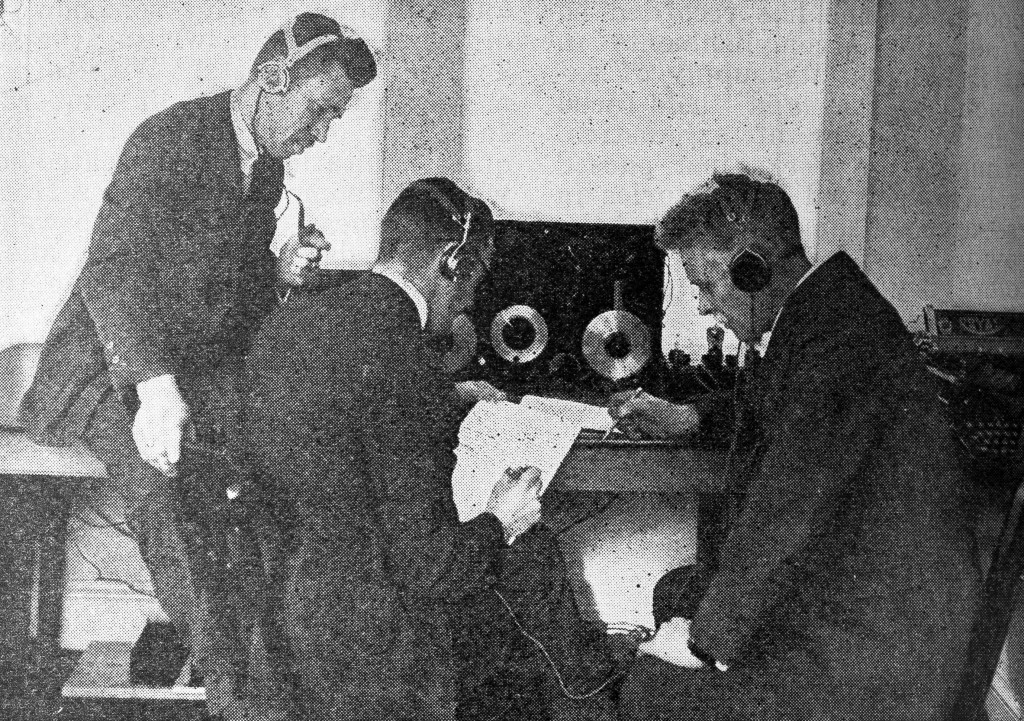
Warner, Schnell, and Maxim during the test
As December arrived amateurs were ready and hoping for a big success in the third set of transatlantic tests, “barring perfectly rotten weather,” wrote Warner.7 It would again be essential for participants to operate in a coordinated fashion. Everyone should get on during the transmitting periods and stick to the schedule, remembering that even low-power stations (those using five or ten watts) were heard in Europe last time. The receiving task was even more important for North Americans—it would be the history making event this time. “We must copy them, fellows. Copy them and open the door to regular two-way transocean work, or get the grand raspberry from all the world,” he warned. Amateurs had the right equipment and operator ability, so the single most important thing to work towards would be cooperation to make the “amateur air in North America … absolutely quiet” during the final ten days of the test when Europe would be transmitting. North American hams must repay their European colleagues’ efforts the previous year to help achieve new records. “Let it not be said of us—oh it must not—that we failed to copy Europe because our men wouldn’t play the game and refused to keep quiet air,” pleaded Warner.
Early indications of success began to appear before the tests even began.8 During the preliminary qualifying session, ninety-one calls were heard in Europe! Using a receiver with a multi-stage RF amplifier, detector and one-stage audio amplifier, the Manchester Wireless Society, operating at their club station 5MS at Baguley, sent their list to Schnell. In France, Deloy at 8AB copied 1ARY’s CW signal on 10 December. And at the Burndept company’s station in London, J. H. D. Ridley copied nine US amateur stations that same day, along with the morning broadcast from WJZ. The signals were booming in, sometimes audible twelve feet from the phones. W.R. Burne, British 2KW, wrote Schnell that, being short of paper, they used the cover of a QST issue to record the call signs as they were heard. He enclosed it in his letter as a souvenir.
The tests were indeed a success. Warner’s exuberant February 1923 QST writeup, “The Transatlantic Triumph,” was nearly fourteen pages long.9 “This poor magazine has recorded so many dazzling accomplishments in recent issues that its supply of exclamation points and bold-faced type is in danger of exhaustion,” he gushed. “Time after time in the weeks just passed we amateurs have achieved big victories in undertakings—accomplishments which have made us throw our cat at the stenographer, crown the office boy with a wastebasket, and dance a merry jig.”
In Europe, 315 individual stations from the US and Canada were heard—161 in Britain and 239 in France and Switzerland. Eighty-five were heard both in Britain and on the continent. All were using CW—not a single spark station was heard.
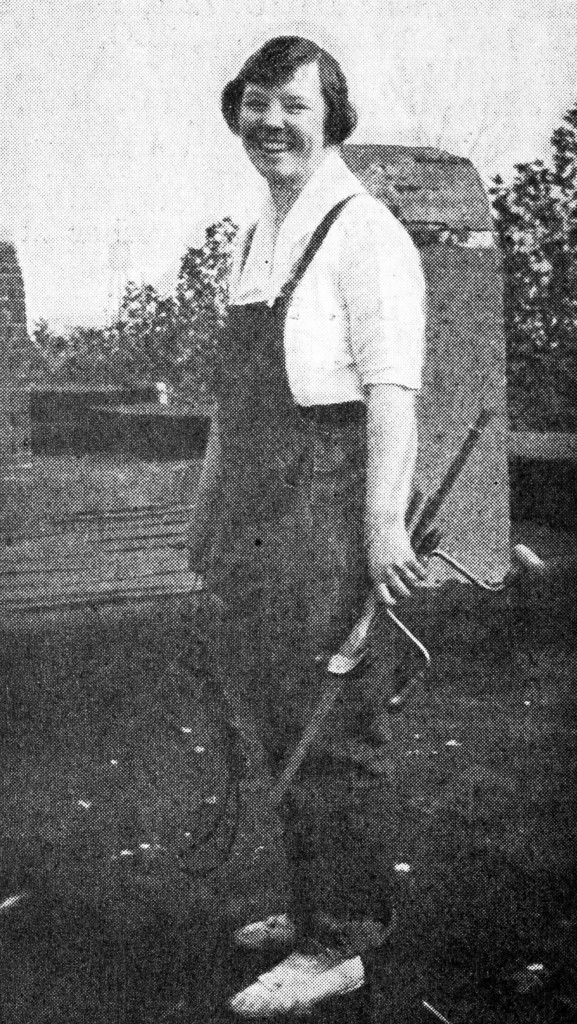
3BCK
Though successful in the reverse direction, only twenty American amateurs heard signals from Europe, mostly French 8AB and British 5WS and 2FZ. Godley must have been “greatly disappointed,” having predicted 250 in December. Undoubtedly hearing signals during the preliminaries had excited more listeners in Europe than in the US and Canada.
QST Technical Editor Robert S. Kruse noted that “Even the Y.L.’s got in on the tests…” and showed a photograph of everyone’s favorite YL, Marion Adaire Garmhausen, 3BCK, in her “working clothes” getting an antenna in shape for the operation. It seems, however, that her efforts went unrewarded since her call sign did not appear in any of the lists (although 3HG, the photographer’s call sign, did).
Complete lists of calls heard were printed for each night of the test, organized according to time period—“free period,” and “codes verified” (for the qualified transmitters)—plus a section labeled “working DX” for calls heard outside the test period or in QSO. The number of stations listed increased each night. While this could have been due to improving conditions, it’s more likely that as word spread of easily copied signals, more listeners and possibly more transmitting stations in the free-for-all sessions were attracted to participate.
In Britain, stations from every North American call district were copied, the most from districts 1, 2, 3 and 8, with 3ZW the most-reported station. Notable among the fourth district list was 4OI in Puerto Rico.
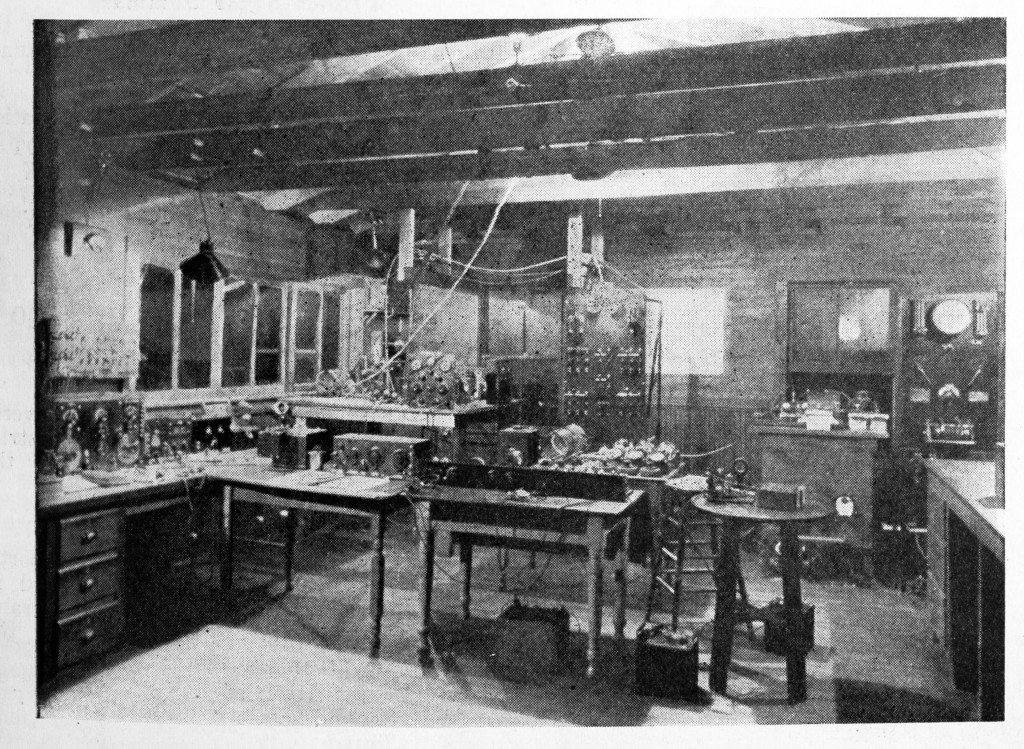
8AQO
Western New York station 8AQO was heard nearly everywhere on every night. Its impressive station equipment and T-antenna were reminiscent of 1BCG’s the previous year. Among the other stations copied both in Britain and in France or Switzerland were 1ZE (Vermilya) and 1BCG. No information had yet been received about the number of listeners in Britain, but Corret reported that at the end of the tests there had been forty listeners in France and two in Switzerland. Their daily reports simply listed calls heard by someone without identifying the listener. Although the number of reported North American calls heard in France exceeded those heard in Britain, the accuracy (in copying call signs and codes correctly) was somewhat lower.
Besides the amateurs, many calls were heard by American ship operators who also listened in.
Coursey reported that seventeen British stations had been assigned transmitting slots and code groups, and Corret listed twenty-two in France.
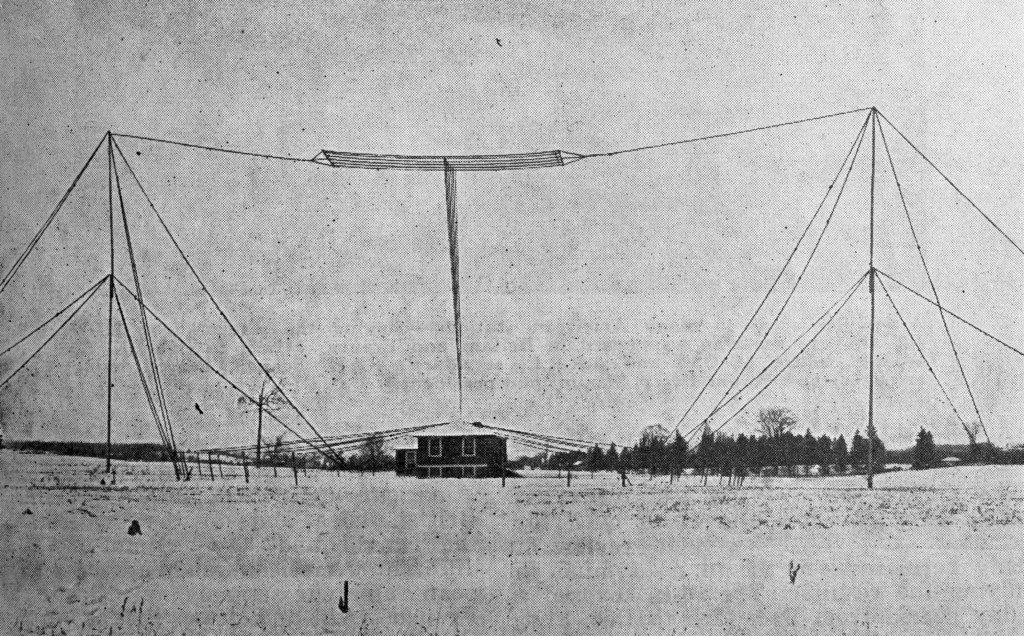
8AQO antenna
There were thirty-minute free-for-all transmit periods in Britain and it was unknown whether or not there were such sessions in France. But the results of the westbound test were comparatively dismal, a factor of ten lower than Godley’s expectation. It was not initially clear what was the cause—poor conditions, transmitters, receivers. Eventually, lack of cooperation on the North American side would be blamed. Nevertheless, the European amateurs were heard in North America, for the first time.
Kruse speculated that one reason for the disparity between eastward and westward reception reports was that, having very restricted transmitting privileges, Europeans had concentrated on improving techniques more than Americans had, particularly working with tuned RF amplifiers, a new technology.
And since there were far fewer transmitting stations in Europe, it was much easier to get cooperation in obtaining silence on the air there. At times, the QRM on the American side was “merciless,” complained Warner. On the first night of listening, many operators were still transmitting due to their confusion over the use of GMT in the schedule. The next couple of nights were “more or less consumed in quieting things down.” As Kruse put it, “it is an awful job in a country having 16,000 licensed transmitters, about 60% of which are thought to be in commission at any one time and representing amateurs of many diverse interests.” After things quieted down, “it was possible to listen for many minutes on 200 meters and meet only the silence of the grave—surely the only time this has been the case since macaroni was invented,” wrote Kruse, which must have caused every reader in 1923 to do a double-take.
But even in the relatively quiet periods, when the major stations were off the air, there were quite a few others completely ignoring the tests, “able to work half-way across the country with their little sets and hugely enjoying the clear uninterrupted signals, telling each other what FB it was.” Clearly annoyed, Kruse continued that “it was the punks and lids who were at it, the halting fists that could hardly be read, the poor sets which had never been heard out of their back-yards before, and blessed if they weren’t getting out all over the country during this quiet spell and enjoying it hugely. Some of ‘em even complained bitterly of QRM!”
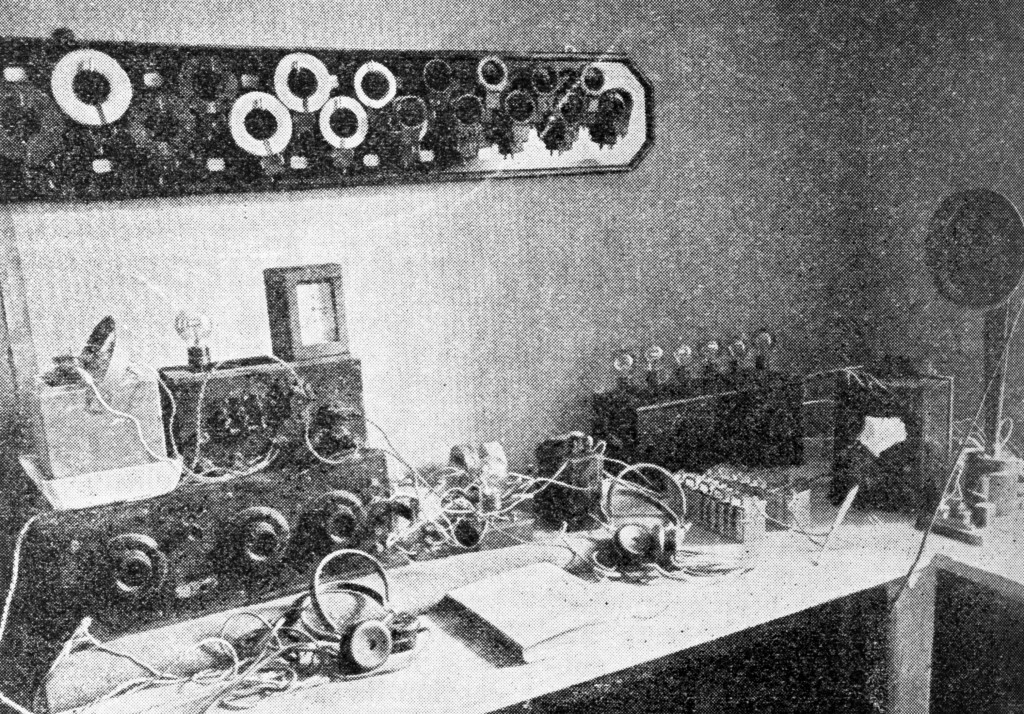
French 8AB
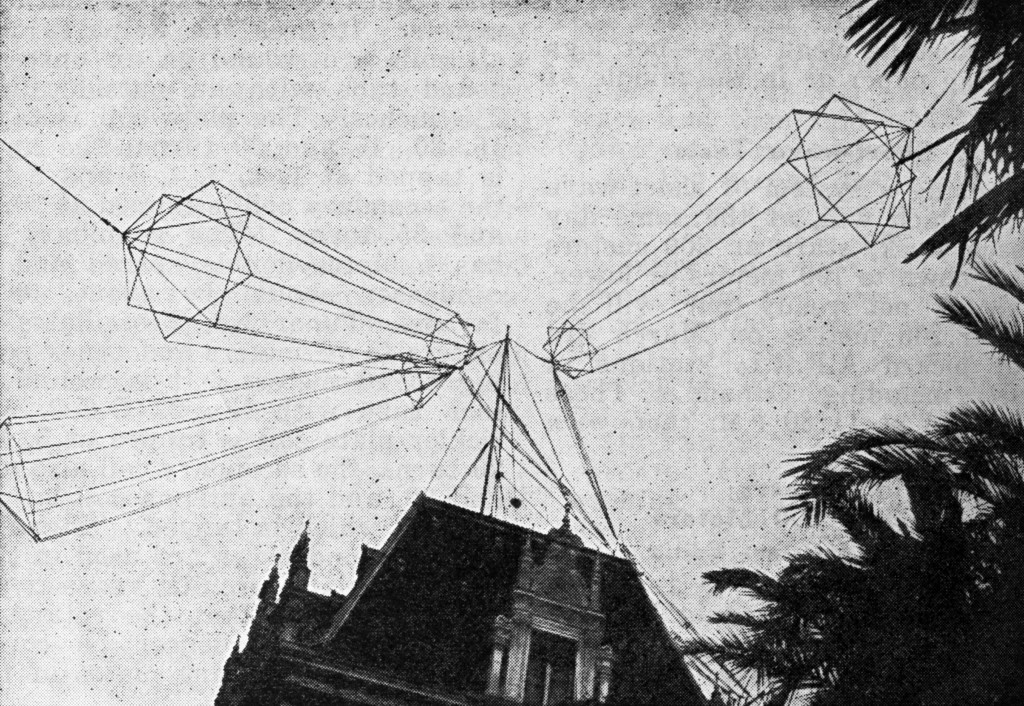
8AB Antenna
The League received hundreds of letters complaining about the QRM during the US receiving portion of the tests.10 Some sent in logs of copied call signs suggesting that a black list be published. It would not happen, though, since the League recognized it really had no authority to demand silence during the tests. And besides, not all US amateurs were ARRL members. “Of course it’s perfectly true that the bulk of the racket was made by our own gang and for such of these as profess to be loyal enthusiastic members we have a grave sympathy,” admitted Warner, adding, “We have a sweet little list of them up at headquarters.”
Nevertheless, the poor showing here could not be blamed the on QRM alone. Warner pointed out that American amateur radio art had developed in an environment very different from that of our European counterparts—one in which the air was constantly filled with signals. Amateurs on this side had not devoted the same concentration to developing ever more sensitive receivers. In fact, so-called “super-sensitive” receivers were easily overloaded by the normal on-air conditions and were therefore purposely avoided on this side of the ocean.
The most often heard European stations were Deloy’s 8AB in France, a 1-kW transmitter and antenna he built especially for the tests, and 5WS, which outperformed all others and was a station set up by the Radio Society of Great Britain especially for the test. British 2FZ, the “dark horse” not being one of the code-word stations, was also seemingly prominent in receive lists. However, in a later report Coursey corrected that 2FZ was not on the air for the test, so whoever was heard was not him.11
8AQO was the most often copied station from North America, although Vermilya at 1ZE was easily copied in both Britain and France, but chose to stop after the first reports showed he had made it. Clive B. Meredith of Cazenovia, New York, built 8AQO in collaboration with second operator Edward Page. A superstation of its time, there were actually four stations at the same location—8XH, a 1-kw transmitter on 500-cycle ICW, 8BSS, a fifteen-watt DC-powered set, WMAC, a low-power broadcasting station, and 8AQO itself, the main station. Its antenna was very similar to the one at 1BCG, star of the previous year’s test: a T-antenna suspended between two 100-foot masts, farther apart than necessary in order to keep the guy wires as far away from the radiating antenna as possible. Like 1BCG, it had a radial counterpoise system converging on the feed point at the roof of the specially built operating building. Impressed, Warner wrote,
The station building itself is a peach. Glass cabinets house the best laboratory apparatus obtainable, and no amateur could wish for better fortune than to be locked into this station and left for a week—he’d forget about eating. Long wave receivers, short wave regenerators, a super-heterodyne, two Beverage Wires, juice on the power board in all varieties of frequencies and voltages, wave meters and standards, half a dozen transmitters. Some station.
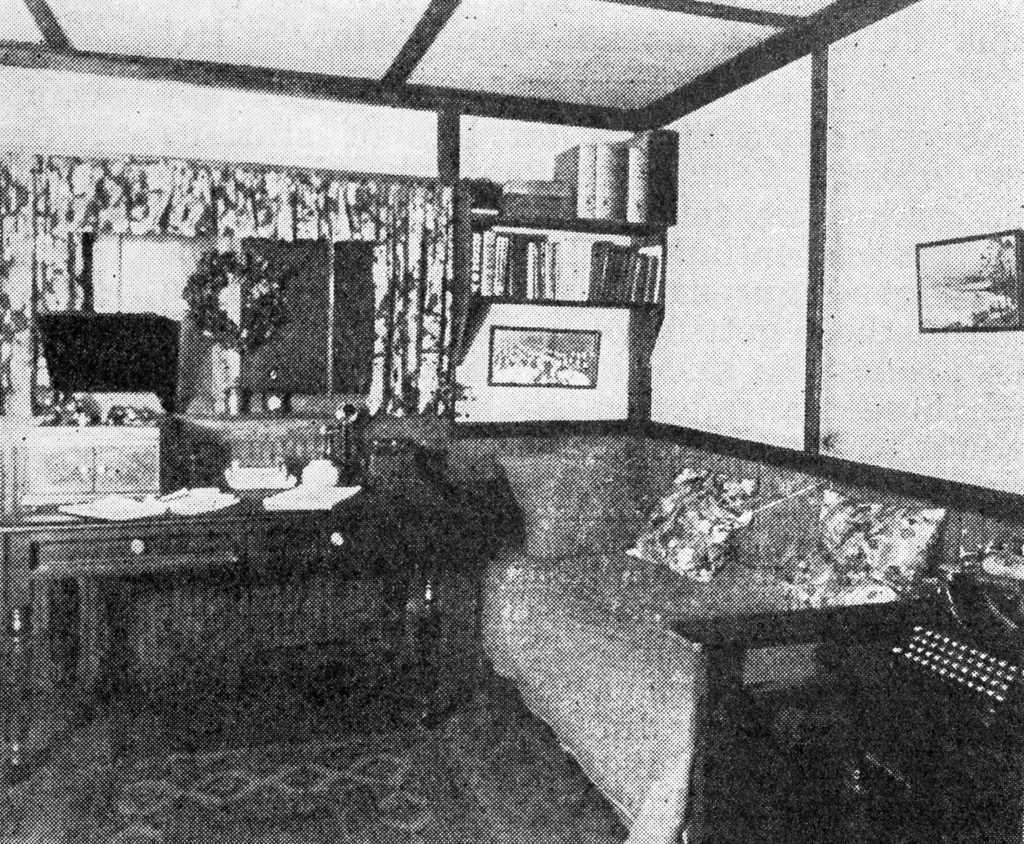
Bunk room at 8AQO
The installation was powered by its own kerosene-fueled generator.
Messages were also passed during the tests. 2ZK sent greetings from New Rochelle, N.Y., to Rochelle in France. 8AQO sent Christmas and New Year’s greetings. But Vermilya topped everyone by passing fourteen messages to Manchester in one night, without pre-planning. His feat began after he had recently given a talk about radio to a group of businessmen in New Bedford. When faced with their skepticism about the accomplishments of amateurs, he offered to take messages bound for England. This was the source of his fourteen messages, collected from the 150 or so attendees that night. During the tests he sent them blind—calling “English 2KW” and signing “Yankee 1ZE,” reporting, “here 14 messages.” After calling like this for four minutes, he sent the fourteen messages. It took thirty-seven minutes for a single run through all of them.
He asked for QSL (acknowledgement) via cable. The next day it arrived:
Manchester, England
Vermilya Marion Mass USA
All your messages received – a great stunt –
(signed) Burne.
Vermilya’s station ran a 750-watt transmitter made up of three 250-watt Radiotron tubes supplied with 2,000 volts from a 1,500-watt DC generator. The high voltage line ran directly through his key, “a big Clapp-Eastham key with 10 mfds of condenser across it to prevent arcing,” he wrote.
QST also noted,
Vermilia is one of those who were bothered by miserable QRM and CQ-ing during the listening period. He says he wishes he had 1,272 freight cars full of Wouff-Hongs, Rettysnitches, ohm-saws, and dynamite, and could get a chance to get these QRM birds out in the Sahara Desert where there would be lots of room to chase ‘em around and throw things at ’em. Hi!
 After spanning the Atlantic in both directions, hams were ready and eager for transoceanic QSOs. It would take almost a year.
After spanning the Atlantic in both directions, hams were ready and eager for transoceanic QSOs. It would take almost a year.

de W2PA
- F. H. Schnell, “The ARRL Transatlantics,” October 1922, QST, 11. ↩
- Kenneth B. Warner, “QRV for the Tests?,” QST, December 1922, 7. ↩
- “Who’s Who in Amateur Wireless,” QST, December 1922, 61. ↩
- F. H. Schnell, “Why Not GMT?,” Editorial, QST, October 1922, 42. ↩
- F. H. Schnell, “The Transatlantic Finals,” QST, December 1922, 8. ↩
- Paul F. Godley, “Listening for Europe,” QST, December 1922, 33. ↩
- Kenneth B. Warner, “All Set,” Editorial, QST, December 1922, 41. ↩
- “In Which We Get Across,” QST, January 1923, 9. ↩
- Kenneth B. Warner, “The Transatlantic Triumph,” QST, February 1923, 7. ↩
- Kenneth B. Warner, “Does This Shoe Fit You?,” Editorial, QST, February 1923, 41. ↩
- “Official European Report on the Transatlantics,” QST, June 1923, 15. ↩
